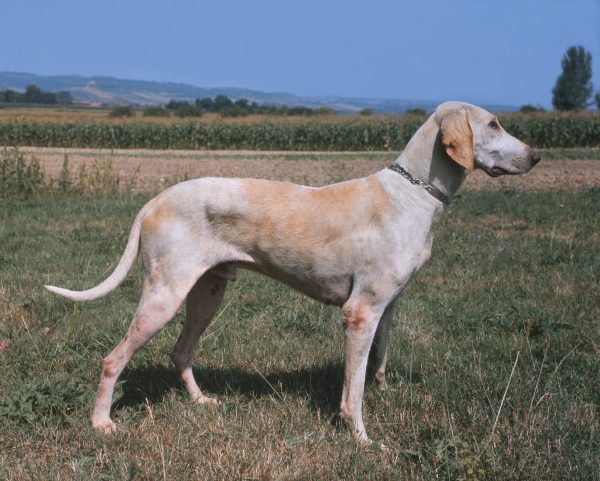
Determining what type of dog you’re seeing in the picture is as much about what’s missing as what’s actually there. There’s no pronounced tuck up, no abrupt stop to the head. His bones are heavier, and he has a stockier build than we’d see in a breed built just for speed, so this narrows down the field. When this dog puts his nose to the ground, his flat, pendulous ears hang near his nose and act as a scent trap, a strong clue that he is probably a scent hound.
This dog, in fact, is a “Billy,” a scent hound developed in the 19th century at the Chateau de Billy in Poitou in west central France. This is an aristocratic hound with no foxhound blood running through its veins because it was created by combining three original strains of dogs, all pure French hounds that are now extinct: The Ceris, the Montaimboeuf, and the Laryee. The Billy itself would have died out after WWII had it not been for a descendant of the breed founder who used the ten remaining Billyes that survived World War II to save the breed from extinction. Some believe that the Harrier and the Poitevin Hound were added to strengthen the Billy’s gene pool.
Like all breeds, this was a dog worth saving. The Billy is the last breed to descend from the King’s White Dog, a large scent hound that was fashionable with royalty from the reign of King Francois I to the reign of King Louis XIV. So well established was this new breed in the 19th century that by 1886, the first breed standard had been written.
The Billy still retains its ancestors’ beautiful high-pitched baying voice that will vary in tone, depending upon the size and closeness of the game he sights. Though the breed remains rare, there are said to be several packs in France that are used to hunt the Roebuck, and another two to hunt wild boar. It’s an FCI recognized breed, though it’s still rarely seen outside France.
Image of a Billy by CallallooAlexis/Adobe
